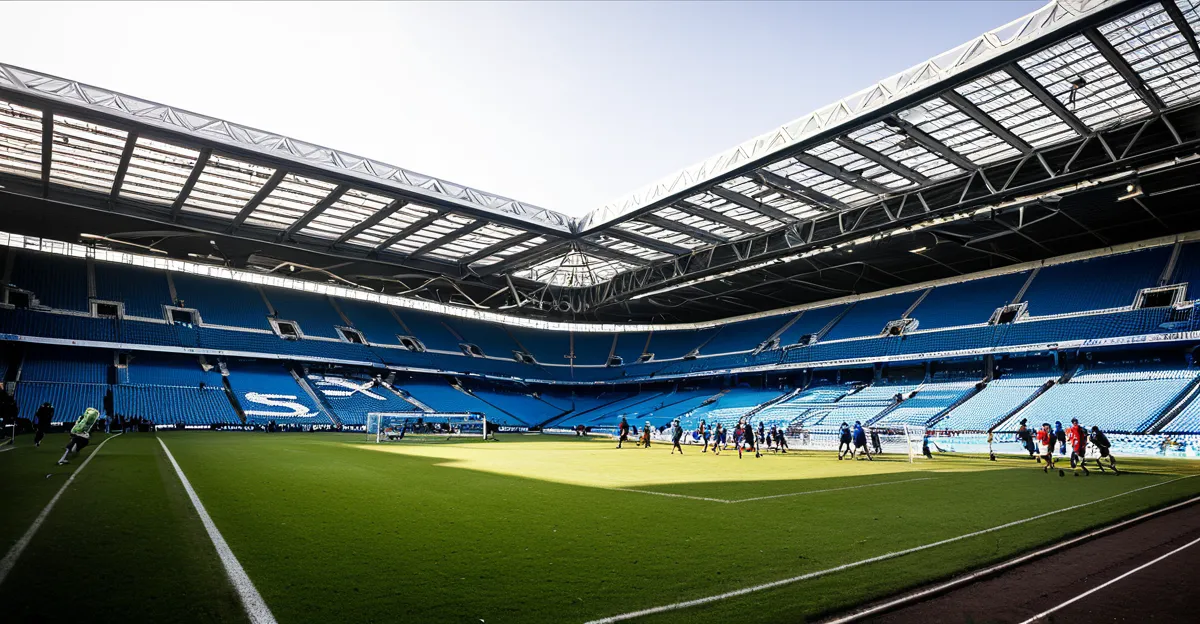Grassroots Sports Programs and Their Current Role in the UK
Grassroots sports encompass local community-based sports programs designed to encourage broad participation and physical activity across all age groups. In the UK sports landscape, these programs form the foundation of the sporting pyramid, offering accessible entry points for individuals regardless of skill level or background. Participation rates in grassroots initiatives remain a critical indicator of the nation’s overall health and interest in sports.
Across the UK, grassroots sports thrive through clubs, schools, and community centres, promoting regular engagement and fostering a sense of belonging. These initiatives significantly increase sports participation rates by breaking down barriers such as cost, location, and equipment needs, which often deter involvement. For many, grassroots sports provide not just physical benefits but also social connections and mental well-being.
In the same genre : How Is the UK Supporting Emerging Talents in Sports?
Crucially, grassroots sports influence both local communities and national sports culture by building a broad base of athletes and fans. They help cultivate enthusiasm that fuels professional levels and contributes to the UK sports landscape’s vibrancy. Understanding this role highlights the importance of continued investment to maintain and grow participation rates and ensure sports remain inclusive and accessible for all.
Contributions of Grassroots Programs to Talent Development
Grassroots sports serve as the critical starting point for talent development by identifying and nurturing young athletes within community settings. In the UK, youth sports programs embedded in grassroots initiatives provide structured environments where children and teenagers can develop fundamental skills, gain confidence, and receive early coaching guidance. This foundation is essential for shaping potential elite athletes.
Also to read : How Can UK Sports Inspire Global Collaboration?
Progression routes from grassroots to elite levels function as clear sporting pathways, enabling promising individuals to advance through more competitive stages, such as regional academies or national training centres. These pathways rely heavily on effective scouting and support mechanisms at the grassroots level. Without this base, the pipeline feeding elite sports would weaken, risking fewer skilled athletes reaching higher competitive stages.
Moreover, grassroots programs promote holistic athlete development by emphasizing physical, mental, and social aspects alongside sport-specific training. This comprehensive approach contributes significantly to long-term athlete success and well-being. Notably, grassroots sports also play a role in maintaining sport participation rates, ensuring a steady influx of talent as younger generations engage actively in sports.
Thus, grassroots sports are indispensable for cultivating future sporting talent and sustaining the UK sports landscape’s vitality.
Advancing Inclusivity and Community Health Through Grassroots Initiatives
Grassroots sports play a pivotal role in increasing inclusivity in sports by lowering entry barriers that often exclude marginalized groups. These programs focus on accessibility—whether through affordable fees, local venues, or adaptable activities—ensuring diverse populations engage actively. How do grassroots initiatives improve inclusivity? They create welcoming environments where people of varying ages, abilities, and backgrounds feel valued and supported. This inclusiveness directly contributes to higher sports participation rates within communities.
Beyond access, grassroots sports positively affect community health by promoting regular physical activity, which combats chronic illnesses and enhances mental well-being. Participating in local sports builds social networks, combats loneliness, and fosters community cohesion. This social impact of grassroots sports strengthens collective resilience, especially in under-resourced areas.
The evidence of these benefits is substantial. Increased inclusivity correlates with healthier, more engaged populations, proving that grassroots sports programs are essential beyond athletic development. Their role in improving both physical and social dimensions of health underscores the broader value of investing in and expanding such initiatives.
Notable Grassroots Program Success Stories in the UK
Grassroots sports case studies in the UK reveal powerful examples of sports transformation driven by community efforts. One notable success is the integration of multi-sport clubs in urban areas, which have boosted sports participation rates by making activities accessible to diverse populations. These clubs often tailor programs to local needs, promoting inclusion and engagement.
Another impactful initiative is targeted youth sports schemes that focus on underrepresented communities. These programs demonstrate how grassroots sports can identify and nurture latent talent, bridging gaps in opportunity. The success lies not only in increased participation but also in producing athletes who progress to higher performance levels, illustrating effective sporting pathways.
Lessons learned from these examples emphasize the importance of adaptive coaching, community partnership, and sustained funding. Flexibility in program delivery—such as offering sessions outside traditional hours—has shown to improve ongoing involvement.
Ultimately, UK examples of grassroots sports success underline the role of consistent support and inclusive design in fostering robust local sports cultures that contribute meaningfully to national development.
Challenges Facing Grassroots Sports Programs
Grassroots sports in the UK face significant barriers that limit their reach and effectiveness. One major challenge is funding shortages. Many local programs depend on inconsistent grants or community donations, which often fall short of covering essential costs such as equipment, coaching salaries, and facility upkeep. Without stable financial resources, sustaining regular activities and expanding participation becomes difficult.
Infrastructure is another critical issue. Many grassroots clubs operate in outdated or insufficient facilities that cannot accommodate growing demand. This physical limitation restricts the number of participants and discourages ongoing engagement.
Policy challenges also affect the development of grassroots sports. Fragmented governmental support and competing regional priorities mean that coordination and long-term investment are sometimes lacking. The absence of clear, coherent policies can hinder effective program planning and resource allocation.
Social and economic factors further compound these problems. Communities with higher deprivation levels often experience reduced access to quality grassroots programs due to costs or traveling distances. This inequality contributes to uneven sports participation rates across the UK.
Addressing these barriers requires targeted funding, improved infrastructure, and cohesive policy frameworks to remove obstacles and position grassroots sports as a sustainable foundation for the UK sports landscape.
Strengthening Grassroots Programs to Shape the Future of UK Sports
To secure the future of UK sports, strengthening grassroots programs is paramount. Sustainable growth requires clear grassroots sports policy that prioritizes long-term investment and strategic planning. Policies must focus on stabilizing funding streams to ensure programs can deliver consistently and expand participation rates without interruption.
Innovation plays a central role in sustainable sports development. Integrating technology—such as digital coaching tools and data analytics—can enhance training quality and talent identification at the grassroots level. Encouraging partnerships between local clubs, schools, and governing bodies creates collaborative networks that amplify resource sharing and expertise.
Policy frameworks should also address inclusivity and community engagement to maintain diverse participation. Offering flexible scheduling, accessible venues, and tailored programming ensures grassroots sports remain welcoming and relevant across demographics. Furthermore, training and support for coaches and volunteers improve program quality and retention, fostering a robust coaching workforce essential to athlete progression.
In sum, embedding sustainability within grassroots sports policy and embracing innovation will nurture a resilient foundation. These steps empower grassroots programs to drive broad participation, effective talent development, and thereby shape a vibrant UK sports landscape for generations to come.



